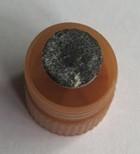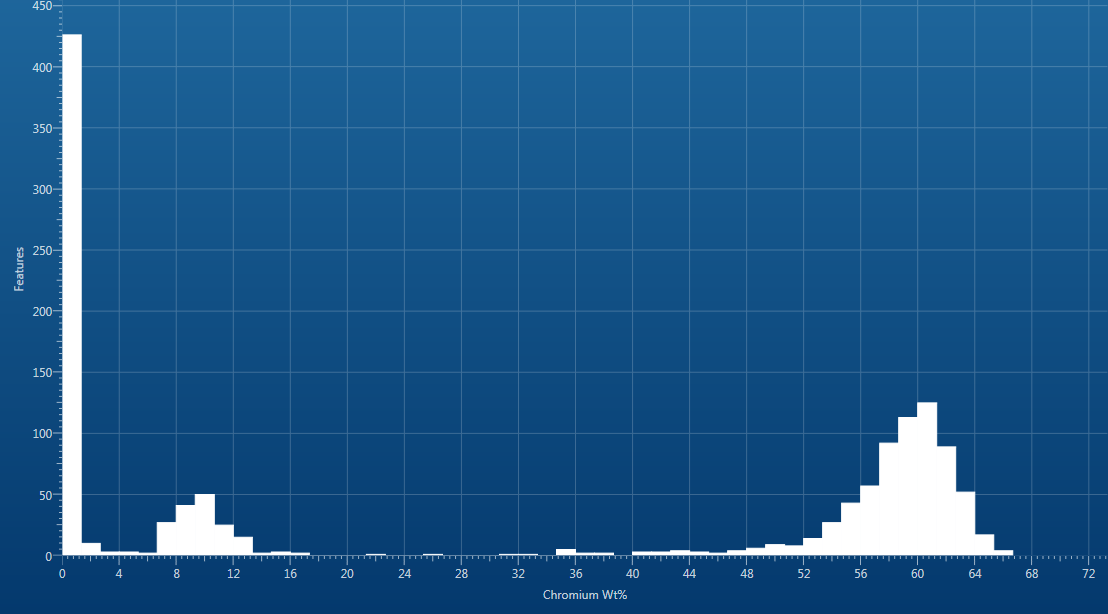Forensic analysis in the SEM covers a wide range of sample types with perhaps the most famous being gunshot residue (GSR). However, shootings are only one type of violent crime and in many situations, a variety of sharp and blunt tools are used as weapons. When a weapon is used in a crime, particles from it may be left behind, providing a potential opportunity to associate recovered suspected weapons with the victim. An emerging analytical approach utilising SEM based particle analysis with AZtecFeature is being used in some investigations to help in determining associations between suspects and crime scenes.
Similar to GSR analysis, this method uses an SEM based approach combined with automated particle analysis in AZtecFeature to analyse particles collected from crime scenes and suspected weapons to see if they are similar. This information can then be used to aid in the process of either associating a suspected weapon (and possibly even a suspect) with a specific crime or ruling it/them out.
The scanning electron microscope (SEM) is a powerful tool for imaging small particles. AZtecFeature combines the acquisition of SEM images with automated thresholding and EDS analysis to identify the locations of particles, and measure both their morphology and composition. By combining AZtecFeature with large area Ultim® Max silicon drift detectors (SDDs), high resolution EDS spectra can be obtained at high count rates. This means that a high throughput can be achieved while, at the same time, high quality compositional measurements are made. All EDS data is processed with AZtec’s Tru-Q™ algorithms to ensure that reliable results are achieved and elements are identified accurately and automatically regardless of the analytical conditions used.
The analysis is carried out by collecting particles from a crime scene or victim and also from the suspected weapon - particles are collected onto a carbon sticky pad on a stub which can be loaded directly into an SEM. The collection of particles from crime scene and suspected weapon may, of course, take place at different times. Samples usually consist of the characteristic metal particles from the weapon, tissue from the victim and environmental particles/dirt/debris.
The entire stub is then analysed in an automated particle analysis run to ensure that every particle on it is found and characterised. The image below shows a montaged image from a stub with an area of 108 mm2 which held particles which had been collected from a suspected weapon – analysed in approximately 37 minutes. 1297 particles were found on the stub of which 876 were determined to be Fe-Cr particles – i.e. a stainless steel – consistent with the material the knife was known to be made of. The nature of the population of particles was then studied. The histogram below shows that the knife generated multiple types of Cr-containing particles with notable groupings of particles with approximately 60wt%, 10wt% and 1wt% Cr within them respectively. By comparing both the composition of individual particles and the shape of the overall population (in terms of a variety of measured parameters) to samples collected from the victim, a comparison can be performed allowing a determination to be made on whether or not the weapon could have been used in the incident in question.
Hopefully this blog has given you an insight into how automated particle analysis with AZtecFeature can be used to identify forensic particles that can help to solve the worst crimes. Whilst this method can only give an indication of whether a weapon may or may not have been used in a crime, it can be valuable in terms of assisting the investigative process.
To learn more about different forensic analyses that can be performed in the SEM, why not watch our webinar “SEM-based Analysis in Forensics – GSR and Beyond” which is available to watch on demand here.








